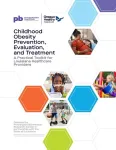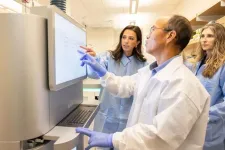Current treatments primarily manage symptoms and improving quality of life, without addressing the underlying cause of pulmonary fibrosis.
Although macrophages, a type of immune cell, had previously been known to contribute to inflammation and scarring in pulmonary fibrosis, the underlying mechanisms remained unclear. After discovering that two proteins in macrophages—YAP and TAZ—are involved in heart scarring, researchers from the School sought to determine whether these proteins play a similar role in the lungs and to better understand how their activity influences disease progression.
YAP and TAZ are part of a critical molecular pathway that usually helps cells grow and repair. However, in a preclinical model of pulmonary fibrosis, the researchers discovered that these proteins can also contribute to harmful scarring.
In their study, published in the European Respiratory Journal, the researchers found that blocking YAP and TAZ can curb scar formation and restore the immediate environment to one that encourages regeneration in three ways:
Dampening a loud call to arms: YAP and TAZ drive inflammation by amplifying the effect of a molecule called CCL2. Like a homing beacon, this signalling molecule attracts various immune cells to the affected areas of the lungs during injuries. However, when recruited to the lungs in excess, these immune cells can harm the organs by causing uncontrolled inflammation, leading to tissue scarring. Disrupting the connection between the two proteins and CCL2 reduces the number of immune cells recruited, impeding tissue scarring.
Maintaining a healthy immune cell ratio: YAP and TAZ can harm the lungs by increasing inflammatory immune cell levels, amplifying tissue inflammation. When these proteins are removed, immune cells that help to repair and regenerate damaged tissue outnumber their inflammatory counterparts, reducing lung inflammation and allowing the organ to heal more effectively.
Disrupting the proteins’ communication with a nearby pathway: These proteins can also exacerbate pulmonary fibrosis by influencing macrophages’ interaction with fibroblasts, which are nearby cells that are key to repairing damaged tissue and maintaining organ structure. Unregulated macrophage activity excessively signals fibroblasts to respond to an injury in the lungs, leading to tissue scarring. Inhibiting YAP and TAZ interrupts the communication between macrophages and fibroblasts, reducing damage to the lungs.
Principal Research Scientist Dr Md Masum Mia from Duke-NUS’ Cardiovascular and Metabolic Disorders Programme, the study’s first author, said of the findings:
“This breakthrough not only deepens our understanding of the specific molecular mechanisms responsible for pulmonary fibrosis, but could also lead to treatments that halt or even reverse lung scarring in the disease.”
Paving the way for new treatment options for pulmonary fibrosis
Global early-phase clinical trials for novel therapies that target YAP and TAZ in cancers, which are characterised by immune-driven inflammation and scarring, are underway, and the research team is exploring if such therapies are viable for treating patients with pulmonary fibrosis.
Associate Professor Manvendra Kumar Singh from Duke-NUS’ Cardiovascular and Metabolic Disorders Programme, the study’s senior author, said of the next steps for the project:
“Pulmonary fibrosis is strongly linked to the unregulated activity of immune and connective tissue cells as well as the loss of epithelial cells. By delving into these interactions that drive tissue scarring, we can gain deeper insights and uncover potential therapeutic targets for treatment. Next, we will further validate the roles of YAP and TAZ in the disease and confirm the effectiveness of therapies that inhibit these proteins, offering patients better outcomes.”
In addition to pulmonary fibrosis, YAP and TAZ are also implicated in heart, liver and kidney fibrosis, suggesting that therapies targeting these proteins could offer broader therapeutic potential for a range of fibrotic diseases.
Professor Patrick Tan, Senior Vice-Dean for Research at Duke-NUS, commented:
“By focusing on the root causes of fibrosis, our novel therapeutic approach offers the potential not just to manage but to significantly halt or reverse the progression of pulmonary fibrosis. This breakthrough could dramatically improve patient outcomes, reduce long-term healthcare costs, and ultimately enhance life expectancy and quality for sufferers globally.”
This new research, part of Duke-NUS’ efforts to develop biomedical solutions that improve the lives of patients, is supported by the National Research Foundation, Singapore under the National Medical Research Council (NMRC) Open Fund-Individual Research Grant (MOH-001625) and the Open Fund-Young Individual Research Grant (MOH-001130) and administered by the Singapore Ministry of Health through the NMRC Office, MOH Holdings Pte Ltd.
###
DOI: 10.1183/13993003.01544-2023
About Duke-NUS Medical School
Duke-NUS is Singapore’s flagship graduate entry medical school, established in 2005 with a strategic, government-led partnership between two world-class institutions: Duke University School of Medicine and the National University of Singapore (NUS). Through an innovative curriculum, students at Duke-NUS are nurtured to become multi-faceted ‘Clinicians Plus’ poised to steer the healthcare and biomedical ecosystem in Singapore and beyond. A leader in ground-breaking research and translational innovation, Duke-NUS has gained international renown through its five Signature Research Programmes and ten Centres. The enduring impact of its discoveries is amplified by its successful Academic Medicine partnership with Singapore Health Services (SingHealth), Singapore’s largest healthcare group. This strategic alliance has led to the creation of 15 Academic Clinical Programmes, which harness multi-disciplinary research and education to transform medicine and improve lives.
For more information, please visit www.duke-nus.edu.sg
About the National Medical Research Council (NMRC)
The NMRC was established in 1994 to oversee research funding from the Ministry of Health and support the development and advancement of biomedical research in Singapore, particularly in the public healthcare clusters and medical schools. NMRC engages in research strategy and planning, provides funding to support competitive research grants and core research enablers, and is responsible for the development of clinician scientists through awards and fellowships. The council’s work is supported by the NMRC Office which is part of MOH Holdings Pte Ltd. Through its management of the various funding initiatives, NMRC promotes healthcare research in Singapore, for better health and economic outcomes.
For media enquiries, please contact:
Brandon Raeburn
Communications
Duke-NUS Medical School
Tel: +65 9776 8496
Email: braeburn@duke-nus.edu.sg
END

